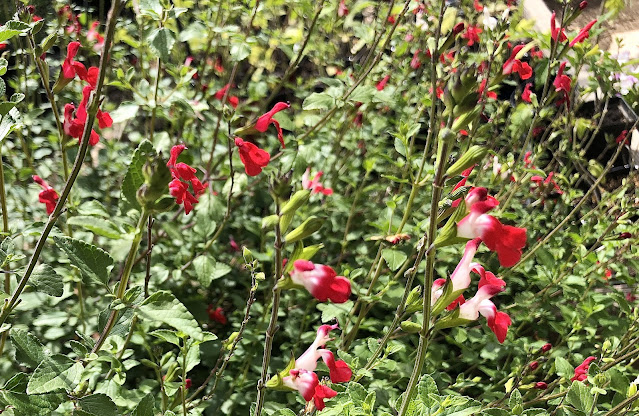
Inventory clearance open only to Friends; new members can join at gate

|
|
Salvia × jamensis
'Hot Lips' is an Arboretum All-Star popular with bees, hummingbirds -- and gardeners. Saturday's sale will have 50 of the plants available. (Photo: Kathy Morrison)
|
Calling all All-Star lovers: This is your last chance this spring to purchase these UC Davis Arboretum favorites direct from the arboretum’s Teaching Nursery.
On Saturday, April 30, the Arboretum Teaching Nursery hosts its final plant sale of the season, a clearance of its spring inventory. The catch? It’s open only to Friends of the Arboretum. Due to construction at the nursery, there are no public sales this spring.
The good news? Shoppers can join the Friends at the gate – and get a welcome gift, too.
All Friends get a 10% discount and one free plant coupon per season as a member appreciation gift. New members also get a free plant coupon.
Sale hours are 9 a.m. to 1 p.m. Saturday. The nursery added thousands of plants including dozens of new varieties to its inventory for this sale, including many native plants. The nursery specializes in water-wise flowering perennials, ground covers and shrubs. Also find an excellent selection of succulents.
To see the inventory in advance, go to: https://arboretum.ucdavis.edu/plant-sales . There's also a new photo gallery of the available plants, viewable here .
The nursery asks shoppers to bring their own boxes, if possible, to take home their new plants.
The Arboretum Teaching Nursery is located on Garrod Drive opposite the Veterinary Medicine complex and small animal hospital on the UC Davis campus. Besides hosting the plant sale, the nursery is also home to beautiful demonstration gardens showcasing the Arboretum All-Stars and other water-wise collections.
For directions and more: https://arboretum.ucdavis.edu .
Comments
0 comments have been posted.Sacramento Digs Gardening to your inbox.
Food in My Back Yard Series
May 6: Maintain soil moisture with mulch for garden success
April 29: What's (already) wrong with my tomato plants?
April 22: Should you stock up on fertilizer? (Yes!)
April 15: Grow culinary herbs in containers
April 8: When to plant summer vegetables
April 1: Don't be fooled by these garden myths
March 25: Fertilizer tips: How to 'feed' your vegetables for healthy growth
March 18: Time to give vegetable seedlings some more space
March 11: Ways to win the fight against weeds
March 4: Potatoes from the garden
Feb. 25: Plant a fruit tree now -- for later
Feb. 18: How to squeeze more food into less space
Feb. 11: When to plant? Consider staggering your transplants
Feb. 4: Starting in seed starting
Sites We Like
Garden Checklist for week of May 11
Make the most of the lower temperatures early in the week. We’ll be back in the 80s by Thursday.
* Plant, plant, plant! It’s prime planting season in the Sacramento area. Time to set out those tomato transplants along with peppers and eggplants. Pinch off any flowers on new transplants to make them concentrate on establishing roots instead of setting premature fruit.
* Direct-seed melons, cucumbers, summer squash, corn, radishes, pumpkins and annual herbs such as basil.
* Harvest cabbage, lettuce, peas and green onions.
* In the flower garden, direct-seed sunflowers, cosmos, salvia, zinnias, marigolds, celosia and asters. (You also can transplant seedlings for many of the same flowers.)
* Plant dahlia tubers.
* Transplant petunias, marigolds and perennial flowers such as astilbe, columbine, coneflowers, coreopsis, dahlias, rudbeckia and verbena.
* Keep an eye out for slugs, snails, earwigs and aphids that want to dine on tender new growth.
* Feed summer bloomers with a balanced fertilizer.
* For continued bloom, cut off spent flowers on roses as well as other flowering plants.
* Add mulch to the garden to maintain moisture. Mulch also cuts down on weeds. But don’t let it mound around the stems or trunks of trees or shrubs. Leave about a 6-inch-to-1-foot circle to avoid crown rot or other problems.
* Remember to weed! Pull those nasties before they set seed.
* Water early in the day and keep seedlings evenly moist.